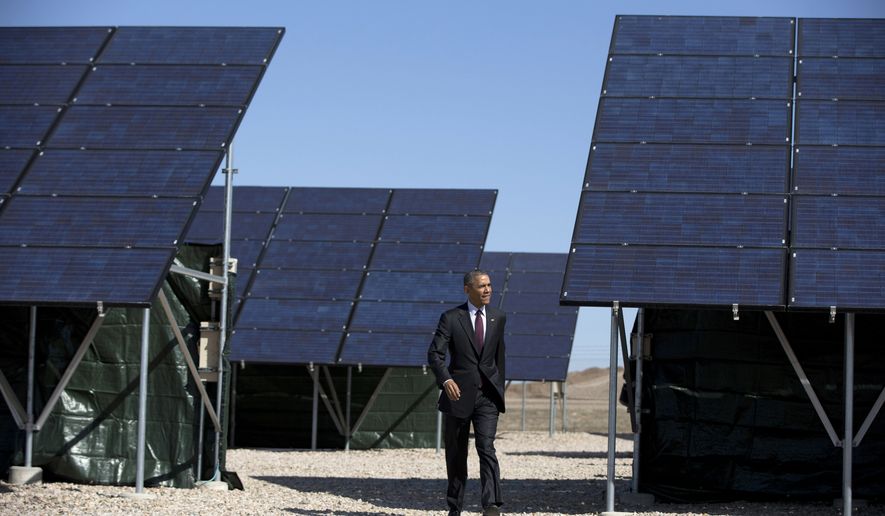The fate of President Obama’s climate change plan now rests with three judges who heard oral arguments Thursday in a case that will decide whether the Environmental Protection Agency can move ahead with historic limits on power plant emissions.
The monumental case came before a federal appeals court on the same day new data was released showing the EPA regulations could lead directly to the loss of nearly 300,000 jobs — more fuel for critics who say Mr. Obama is pursuing a radical environmental agenda at the expense of jobs and affordable electricity rates.
Amid political battles, a host of legal questions and widespread belief the president’s proposal ultimately will end up before the U.S. Supreme Court, EPA attorneys argued that it’s too early to bring legal challenges because the so-called Clean Power Plan has yet to be finalized. The final version will be released this summer and is widely expected to call for a 30 percent cut in carbon emissions by 2030, forming the basis for Mr. Obama’s broader global warming agenda.
The plaintiffs, led by West Virginia and Ohio-based Murray Energy, and also including a dozen other states, countered that the EPA’s plan would require so much work on the part of states and could be so potentially devastating to state economies that the court must intervene immediately.
West Virginia and Murray Energy brought separate lawsuits, but they were argued jointly before the U.S. Court of Appeals for the District of Columbia.
“If we let this rule get finalized … then it is going to be very difficult to undo all the damage,” West Virginia Attorney General Patrick Morrisey said following the oral arguments. “The fact we’re still in the proposed stage and they’re saying, ’You can’t sue yet,’ it is really a sham. We believe the time is right for this.”
The plantiffs contend the EPA is overstepping its authority under the federal Clean Air Act by, among other things, requiring states not just to address power plants themselves but also to make other changes to broader energy policy, such as closing coal facilities and replacing them with renewable energy projects in order to meet the new carbon thresholds.
But at least two of the three judges seemed sympathetic to the administration’s case. They suggested that it would be problematic for the court to stop regulations that technically haven’t been issued.
“Typically, we’re not in the business of guessing what the final rule would look like,” said Judge Thomas Griffith. “You’re inviting us into a morass.”
As the EPA plan works its way through the courts, lawmakers also are weighing in. The House Energy and Commerce Committee has begun work on legislation that would stop implementation of the emissions mandates until all legal challenges are settled.
Meeting the EPA’s reduction targets will be impossible without addressing emissions from coal-fired power plants, the largest source of carbon pollution. The EPA admits that if the plan is fully implemented, coal’s share of U.S. electricity generation will drop from today’s nearly 40 percent to about 30 percent by 2030.
New research from the center-right American Action Forum released Thursday shows what the effects of implementation could be. The group says the EPA plan could cause more than 90 coal-fired power plants to shut down.
The fallout from those closures could eliminate as many as 296,000 jobs, data show. Critics say higher electricity bills and a weakened electrical grid also are likely consequences.
In West Virginia, Mr. Morrisey says the impact would be dramatic.
“Every coal job that gets lost, there are potentially six or seven that may get lost with it,” he said, adding there is a “very real possibility” the Supreme Court ends up being the final word on the EPA plan.
Mr. Obama has brushed off the grim predictions of economic doom. He argues that his climate change steps, including carbon reductions and auto fuel efficiency standards, are good for the economy and good for American families.
“More folks are saving money at the pump because of increased fuel efficiency standards and greater energy production, doubling of clean energy production [and] reduction of carbon pollution,” he said during an address at the White House Thursday.
• Ben Wolfgang can be reached at bwolfgang@washingtontimes.com.




Please read our comment policy before commenting.